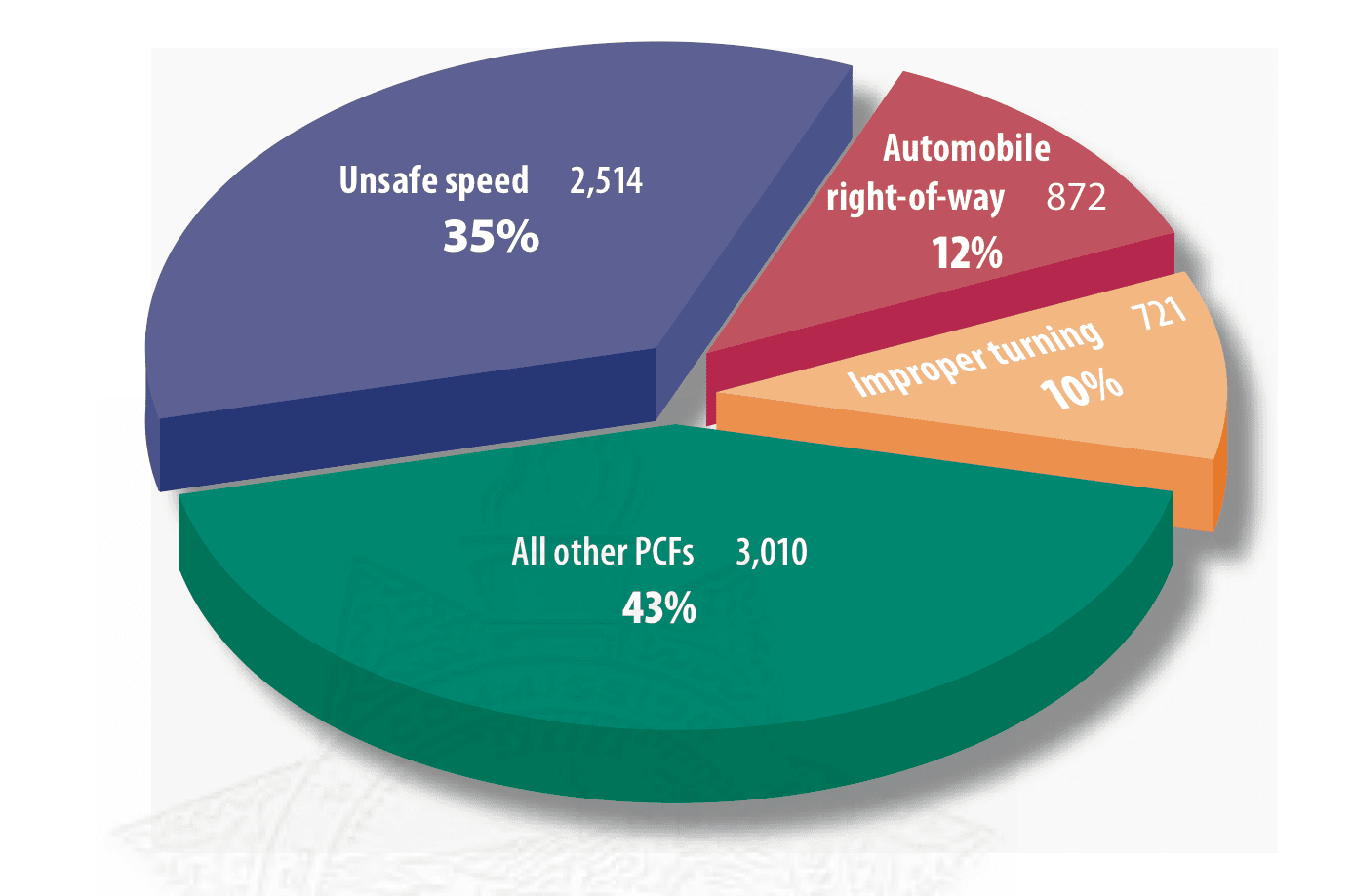Real-World Simulation Training Successes: Sacramento PD and FDNY Ambulances
Published
There are two key focus areas for improving police pursuit driver training programs:
- speed: reduce it whenever possible, maintain vehicle control when high-speed operation is a necessity
- negotiating right-of-way: avoiding other motor vehicles/pedestrians/cyclists, clearing intersections, completing turns, etc.
Addressing Key Danger Points with Police Pursuit Driver Training

Primary collision factors for vehicle accidents resulting in law enforcement officer injury (via CA POST)
As noted by California’s Commission on Peace Officer Standards and Training (CA POST) in their 2009 Driver Training Study, speed was a contributory factor in 83 percent of law enforcement traffic fatalities during their study period (and the primary factor more than a third of the time).
As for negotiating right of way, CA POST found:
Right-of-way issues and turns typically occur at intersections. Intersections have consistently been identified as danger points for traffic collisions. Officers routinely have to negotiate intersections under emergency conditions, which increases the collision potential.
As we’ve noted in the past, a well-implemented LEDS (“Law Enforcement Driving Simulators“) driver training program can go a long way in addressing the hard and soft skills vital to high-speed police driving. According to CA POST, simulator training programs have also been shown to “[reduce] the number of critical errors committed at intersections–errors that lead to loss of control and consequent accidents–by more than 67%.”
Real-World Simulator Training Applications: Sacramento and New York
In their 2009 study, CA POST highlighted Sacramento’s long track record of proactive risk-reduction with all municipal driver training (e.g., police, emergency vehicle operators, etc.) These policies “resulted in a consistently low accident rate for many years.” In the specific case of the Sacramento Police Department, CA POST attributed the exceptionally low accident rates both to a comprehensive basic academy driving program and ongoing re-training.
In contrast to the norm in California, Sacramento PD’s basic police pursuit driver training program included high-speed driving, night driving, avoiding interference vehicles, and an “aggressive two-day in-service program” that used both LEDS-based and EVOC (i.e., traditional “closed course”) training.
CA POST concluded that “the Sacramento PD program is a notable program because it has achieved significant results without an increased budget or staffing. Savings from reduced civil liability losses offset extra training costs. This program also illustrates the benefits of blended refresher training (20 hours every 2 years).”
The Fire Department of the City of New York (FDNY) began relying more heavily on LEDS-based training in the early 2000s. Specifically, they aimed to increase driver safety among their ambulance drivers. (EMTs face many of the same driving risks as on-duty police officers, especially at intersections.) In the three years following FDNY’s implementation of a LEDS program, they saw a steep reduction of intersection collisions—even as call volume and the number of units on the street steadily increased.
“While there could be confounding factors in each of these examples,” CA POST concluded, “it appears that their success (with collision reductions) has been realized as a result of changes in their training programs.”
Key High-Speed Police Pursuit Driver Training Takeaways
Sacramento PD and the FDNY underscore several of CA POST’s key takeaways for improving police pursuit driver training programs:
- SPEED: We know that speed plays a major role in law enforcement crashes. Training at speeds near those reached during emergency vehicle operation is the only way to prepare officers for the emotional and hard-skill demands of high-speed driving.
- INTERFERENCE: Right-of-way issues (especially at intersections) compound the risk associated with speed. Training must include interference vehicles in order to be effective.
- TECHNOLOGY: New technologies don’t just make it possible for emergency vehicle operators to safely train at high speeds and while avoiding multiple interference vehicle(s). They offer additional tools (including scenario customization, repetition, geo-specific databases, and after-action analysis) that make for significantly more effective and lasting training.
FAAC Incorporated is the leader in simulation training solutions. Our high fidelity simulators provide an unmatched level of realism that immersion, allowing users to experience real world conditions and events. Find us online at faacdev.wpengine.com

